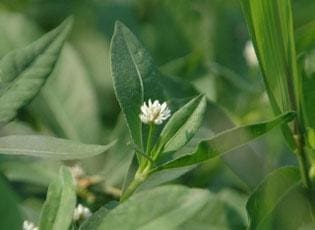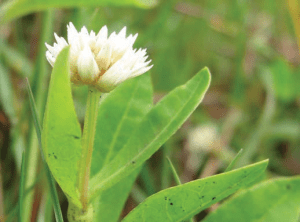Welcome to a journey of uncovering the truths behind common misconceptions about alligator weed. As you dive into the world of this often misunderstood plant, you’ll discover that not everything you’ve heard about it is accurate. From its impact on the environment to its resilience, this article will shed light on the surprising realities of alligator weed, clearing the fog of myths and presenting the facts in a friendly and accessible way. Get ready to rethink what you thought you knew about this intriguing plant!
Common Misconceptions About Alligator Weed And The Truth Behind Them
Have you ever found yourself confused about what alligator weed actually is? You’re not alone—this resilient aquatic plant is often surrounded by myths and misunderstandings. Today we’re going to clear up these misconceptions and uncover the truth behind them. By the end of this article, you’ll be well-versed in the facts about alligator weed, understanding both its challenges and its quirks.

What is Alligator Weed?
Alligator weed (Alternanthera philoxeroides) is an invasive perennial plant that has its origins in South America but has spread globally, causing a significant impact on water bodies, agriculture, and ecosystems. While its glossy leaves and small white flowers may seem harmless, this plant is often a point of contention due to its aggressive growth and potential to disrupt natural habitats.
Misconception #1: Alligator Weed is Just Like Any Other Weed
You might assume that all weeds are the same, but alligator weed is a bit of an outlier. Unlike your typical yard weeds, alligator weed can form dense mats over water bodies, obstructing waterways and impacting both human activities and aquatic life.
Truth: Alligator Weed’s Unique Characteristics
Alligator weed isn’t your garden-variety nuisance. It possesses buoyant stems and can survive in both aquatic and terrestrial environments. This dual adaptability makes it incredibly hardy and challenging to manage.
| Characteristic | Alligator Weed | Common Weeds |
|---|---|---|
| Habitat | Aquatic and terrestrial | Primarily terrestrial |
| Growth Rate | Rapid | Varies |
| Impact | Clogs water bodies, disrupts ecosystems | Generally less disruptive to aquatic environments |
| Resilience | High resistance to environmental changes | Varies |

Misconception #2: Alligator Weed is Easy to Control
If you think pulling out alligator weed is as simple as a quick yank, think again. This plant has an incredible ability to regenerate, making it a tough opponent for even the most diligent gardeners and conservationists.
Truth: Challenging Management
Alligator weed requires a multifaceted approach for successful management. Mechanical removal, biological control, and chemical treatments are often employed together to tackle this stubborn plant.
Mechanical Removal
While you can remove alligator weed manually, be prepared for a labor-intensive effort. Its roots can grow deep and thick, making complete extraction difficult.
Biological Control
Introduction of natural enemies, like the alligator weed flea beetle (Agasicles hygrophila), can help control its spread. However, it’s crucial to monitor these biological agents to ensure they don’t affect non-target species.
Chemical Treatments
Herbicides can be effective but must be used cautiously to avoid harming other plants and animals. Aquatic herbicides specifically designed to target alligator weed are often the best choice.
Misconception #3: Alligator Weed Only Grows in Warm Climates
It’s easy to assume that a plant originating from South America would only thrive in warm, tropical climates. However, alligator weed has proven to be highly adaptable.
Truth: Widespread Adaptability
Alligator weed has spread to various regions across the globe, including North America, Australia, Asia, and Europe. Its ability to survive in a range of climates—from mild to harsh winter conditions—makes it a formidable invader.
Case Study: Spread in North America
In the United States, alligator weed was first reported in the 1890s and has since spread across the Southeast, causing significant ecological and economic impacts.
Geographical Impact
| Region | Climate Characteristics | Alligator Weed Presence |
|---|---|---|
| North America | Temperate, includes cold winters | Widely distributed across southeastern states |
| Australia | Varied, from deserts to tropics | Found in water bodies and moist environments |
| Asia | Diverse, from tundra to tropics | Present in many regions, causing agricultural issues |

Misconception #4: Alligator Weed is Harmless to Native Species
Another common misconception is that alligator weed doesn’t pose a significant threat to native species. The reality is quite the opposite.
Truth: Ecological Disruption
Alligator weed’s rapid growth and dense mats can outcompete native plants for resources like sunlight and nutrients. This can lead to the decline or displacement of native species, disrupting local ecosystems.
Impact on Aquatic Life
Fish and other aquatic organisms can find their habitats severely altered by the presence of alligator weed. The dense mats can deplete oxygen levels in the water, affecting the overall health and biodiversity of the ecosystem.
Agricultural Concerns
In agricultural settings, alligator weed can invade crop fields and pastures, reducing productivity and leading to significant economic losses for farmers.
Misconception #5: Alligator Weed Has No Benefits
With all the trouble it causes, you might think alligator weed has no redeeming qualities. Surprisingly, it does have some properties that can be useful.
Truth: Potential Uses
While it’s essential to manage its spread, alligator weed does have some beneficial aspects, primarily in traditional medicine and phytoremediation.
Traditional Medicine
In some cultures, alligator weed is used for its medicinal properties. It has been traditionally employed to treat ailments like fever, skin issues, and various inflammatory conditions.
Phytoremediation
Alligator weed has been studied for its potential in phytoremediation—the use of plants to remove pollutants from the environment. Its ability to absorb heavy metals and other contaminants makes it a candidate for cleaning up polluted sites.
| Potential Benefits | Description |
|---|---|
| Medicinal Uses | Traditional treatments for fever, inflammation, and skin issues |
| Phytoremediation | Absorption of heavy metals and contaminants |

Misconception #6: Anyone Can Identify Alligator Weed
Identifying alligator weed correctly is crucial for its management. However, many people find it challenging to distinguish it from other similar-looking plants.
Truth: Identification Challenges
Alligator weed can be easily confused with other aquatic plants, such as water spinach (Ipomoea aquatica) and other species within the Alternanthera genus.
Key Identification Features
To accurately identify alligator weed, look for the following characteristics:
- Leaves: Oppositely arranged, elliptical to lance-shaped, with smooth margins.
- Stems: Hollow and can float on water.
- Flowers: Small, white, and papery, arranged in clusters.
Knowing these key features can help in distinguishing alligator weed from other plants.
| Feature | Description | Common Look-alikes |
|---|---|---|
| Leaves | Opposite, elliptical to lance-shaped, smooth edges | Water spinach, other Alternanthera species |
| Stems | Hollow, buoyant | Various aquatic plants |
| Flowers | Small, white, clustered | Often confused with many small-flowered plants |
Misconception #7: Only Experts Can Help Manage Alligator Weed
If you’ve been led to believe that only professionals can tackle alligator weed, it’s time to reconsider. While expert help is valuable, community involvement also plays a significant role.
Truth: Community Involvement Matters
Effective management of alligator weed often requires community awareness and action. Local initiatives, volunteer programs, and public education can contribute immensely to controlling its spread.
How You Can Help
- Educate Yourself and Others: Understand the plant’s characteristics, spread, and impact.
- Report Sightings: Notify local environmental agencies if you spot alligator weed in your area.
- Participate in Removal Efforts: Join community clean-up events and be vigilant in your own property.

Misconception #8: Alligator Weed Is a Lost Cause
Given its resilience and rapid growth, it’s easy to feel that controlling alligator weed is a losing battle. However, there are numerous successful management strategies.
Truth: Hope Right on the Horizon
While challenging, managing alligator weed is not impossible. Integrated Pest Management (IPM) approaches combining mechanical, biological, and chemical methods have shown promising results.
Integrated Pest Management (IPM)
An IPM strategy involves:
- Monitoring: Regularly check and identify infestations.
- Preventative Measures: Use barriers and manage nutrients to prevent spread.
- Control Methods: Combine mechanical, biological, and chemical approaches for effective management.
Misconception #9: Alligator Weed Has No Legal Implications
Some might think that alligator weed is merely a plant concern with no legal ramifications. However, many regions have laws and regulations regarding its control.
Truth: Regulatory Measures
Due to the significant impact of alligator weed, various jurisdictions have legal frameworks in place for its control and management.
Example Regulations
In the United States, alligator weed is listed as a noxious weed in several states, meaning it is regulated by law, and actions must be taken to manage its spread.
| Region | Legal Status | Key Regulations |
|---|---|---|
| United States | Noxious weed in several states | Required management and reporting |
| Australia | Declared pest in many states | Mandatory control programs and restrictions |
| Europe | Varies by country, often restricted | Movement and sale often controlled |
Misconception #10: Ignoring It Will Make It Go Away
Perhaps the biggest misconception of all is the idea that if you ignore alligator weed, it will eventually disappear on its own.
Truth: Active Management is Essential
Ignoring alligator weed will only exacerbate the problem. The plant’s rapid growth and adaptability mean that it can quickly overtake large areas if left unchecked.
Proactive Steps
- Regular Monitoring: Keep an eye on water bodies and moist areas where alligator weed is likely to appear.
- Early Intervention: Address issues as soon as they are identified to prevent larger problems.
- Ongoing Education and Training: Stay informed about the latest management techniques and engage in continuous learning.
Conclusion
Alligator weed is a complex plant, often misunderstood and underestimated. By debunking these common misconceptions, you can become better equipped to handle and help manage this resilient invader. From challenging removal processes to its impact on ecosystems and potential benefits, alligator weed is a plant that demands our attention and active management. By involving the community, staying informed, and adopting integrated pest management strategies, we can make strides in controlling its spread and minimizing its impact.
So, next time you hear someone mention alligator weed, you’ll not only know the truth behind the myths but also how you can be a part of the solution. Together, we can overcome the challenges it presents and protect our precious ecosystems.